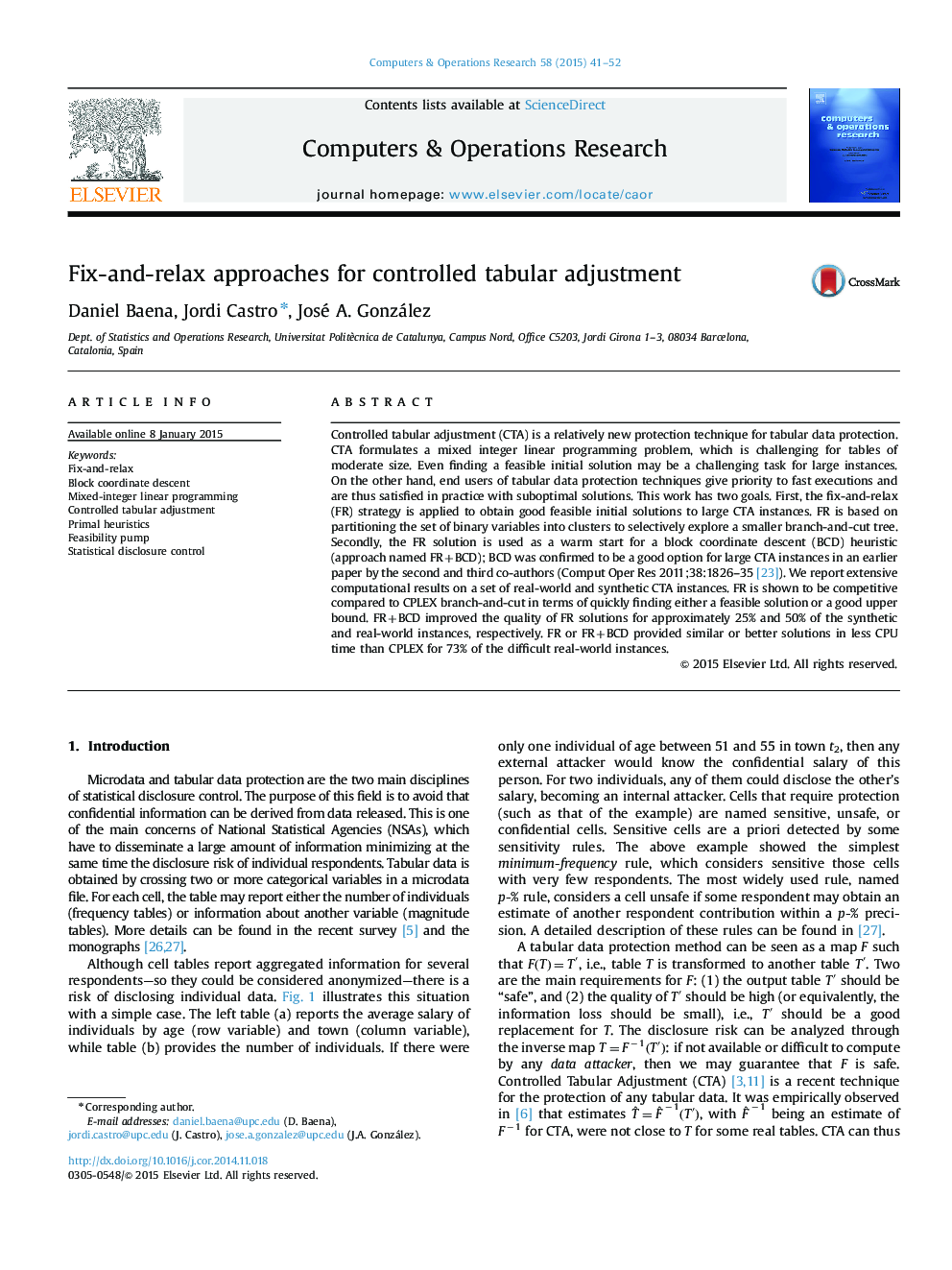| Article ID | Journal | Published Year | Pages | File Type |
|---|---|---|---|---|
| 474629 | Computers & Operations Research | 2015 | 12 Pages |
Controlled tabular adjustment (CTA) is a relatively new protection technique for tabular data protection. CTA formulates a mixed integer linear programming problem, which is challenging for tables of moderate size. Even finding a feasible initial solution may be a challenging task for large instances. On the other hand, end users of tabular data protection techniques give priority to fast executions and are thus satisfied in practice with suboptimal solutions. This work has two goals. First, the fix-and-relax (FR) strategy is applied to obtain good feasible initial solutions to large CTA instances. FR is based on partitioning the set of binary variables into clusters to selectively explore a smaller branch-and-cut tree. Secondly, the FR solution is used as a warm start for a block coordinate descent (BCD) heuristic (approach named FR+BCD); BCD was confirmed to be a good option for large CTA instances in an earlier paper by the second and third co-authors (Comput Oper Res 2011;38:1826–35 [23]). We report extensive computational results on a set of real-world and synthetic CTA instances. FR is shown to be competitive compared to CPLEX branch-and-cut in terms of quickly finding either a feasible solution or a good upper bound. FR+BCD improved the quality of FR solutions for approximately 25% and 50% of the synthetic and real-world instances, respectively. FR or FR+BCD provided similar or better solutions in less CPU time than CPLEX for 73% of the difficult real-world instances.
